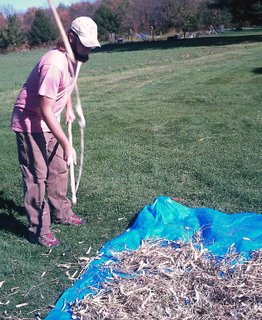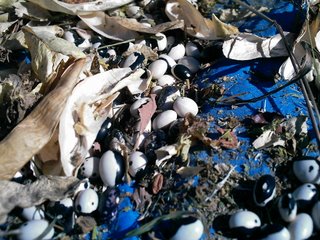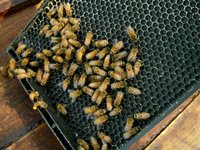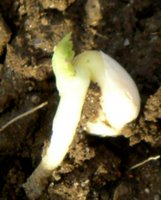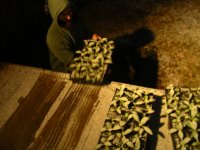This is more a preparation guideline than a recipe, though following these ingredients will produce wonderous results. However, substitutions in seasonings and stock are highly encouraged. This method allows the unique qualities of these heirloom variety local beans to come through. Since these beans are fresher by far than dried beans in the grocery store, they require less soaking time, less cooking time, and less seasoning.
Along with bread and a light salad, ample for four as a hearty meal.
1 1/2 cups dried beans
about 6 cups ham stock (made by simmering a ham bone in water for about 4 hours)
2 tbs olive oil
garlic – as much as you like, minced
onion – about a cup chopped
1/2 tsp rosemary
1/2 tsp marjoram
1/2 tsp thyme
1/2 tsp sage
1 tsp black pepper
(Poultry seasoning is a mix of the above ingredients. I prefer them separate, but if you have the powdered mixture on hand, by all means, use it.)
Soak the beans in water. These beans do not have to be soaked overnight, but should be soaked for about 6 hours. Longer is fine. Shorter is fine, too, the beans will simply need to cook longer. In a heavy pot, sauté the onion and garlic until soft, then add the beans and their soaking water. Add stock until the beans are covered by at least an inch. Cover. Simmer on low, occasionally stirring. Add more stock as necessary to provide enough moisture. After two hours, begin tasting the beans. They should be tender. The beans should have imparted a starchy thickness to the liquid, and much of it should have been absorbed by the beans or evaporated. The overall consistency will resemble very thick stew. Cook longer as needed, continuing to taste test for tenderness every 20 minutes or so, adding stock as needed. When they are close to being done, add the seasonings.
